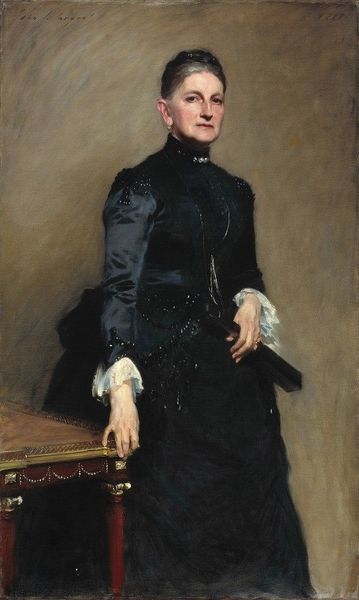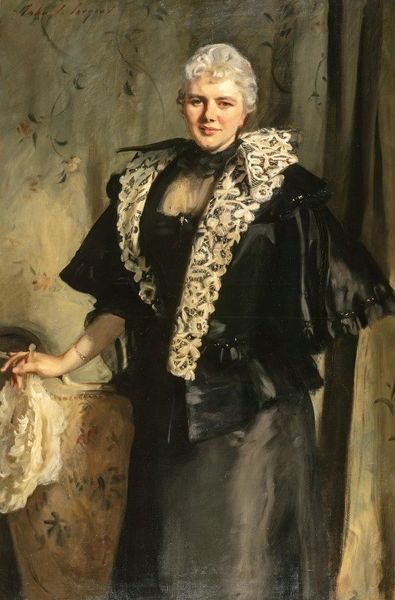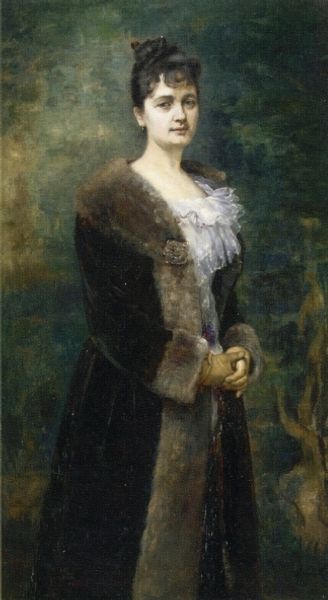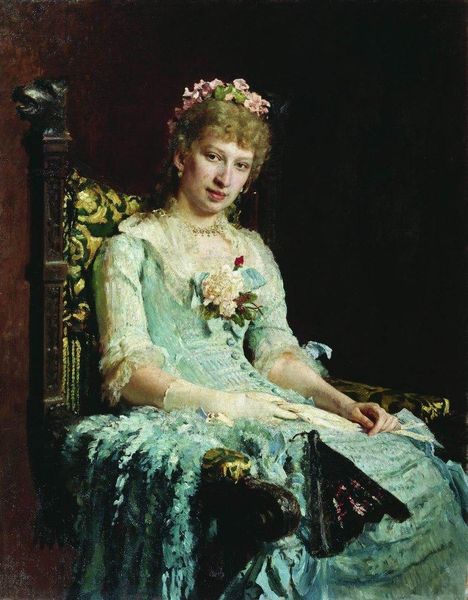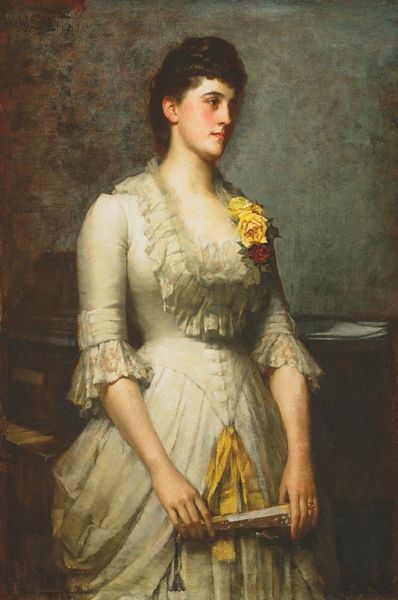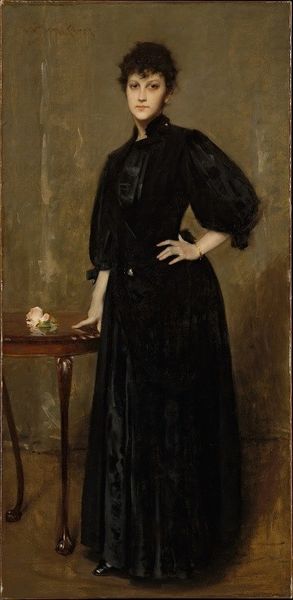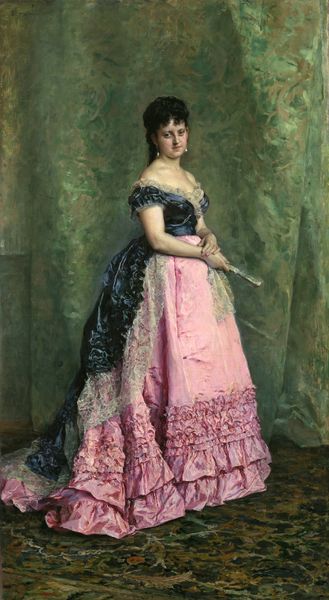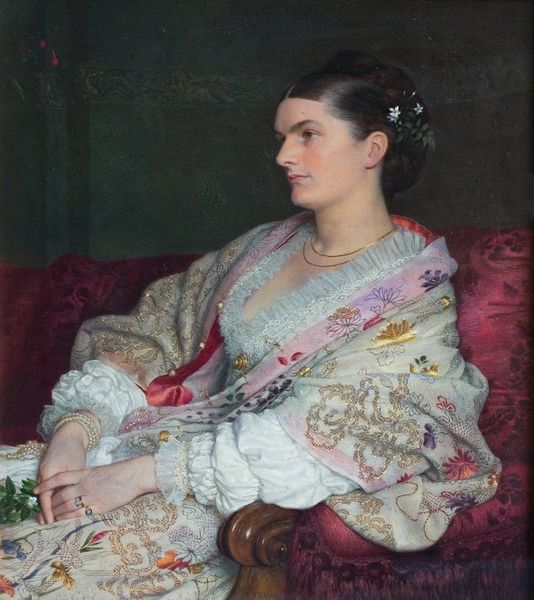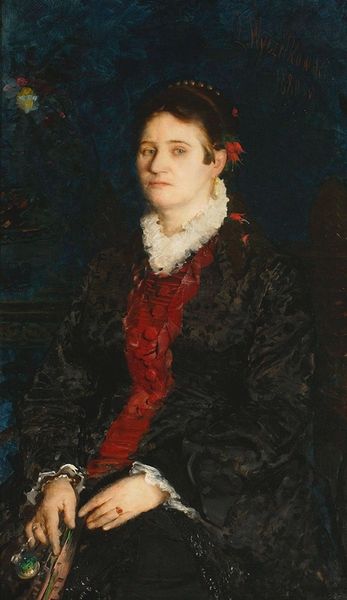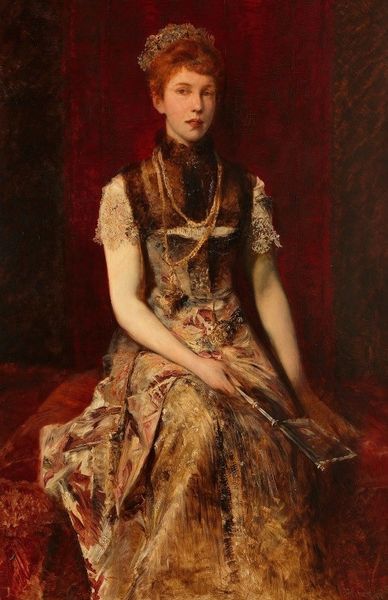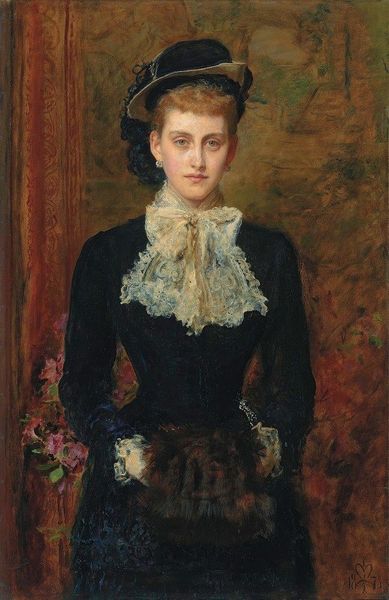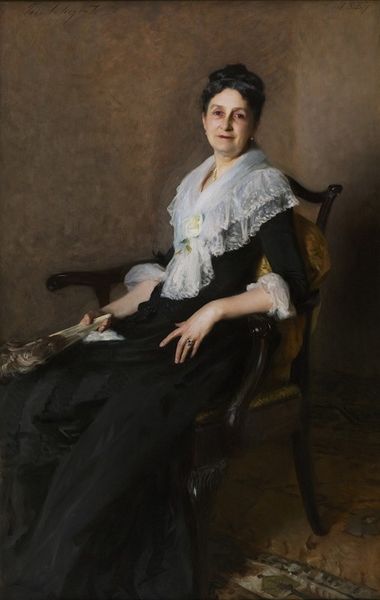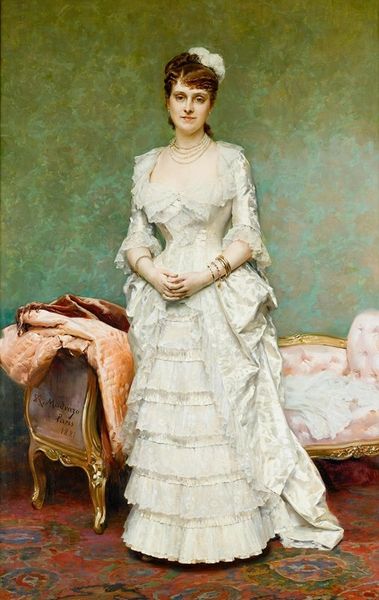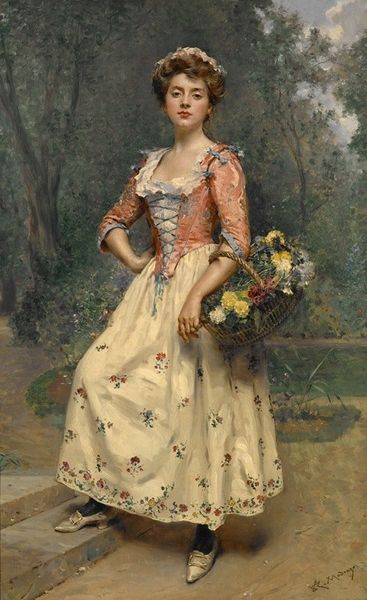
Copyright: Public Domain: Artvee
Curator: The texture! It looks like the artist layered velvet, silk, and pearls right onto the canvas! Editor: That's certainly one way to put it! This oil painting is entitled "Princess Marie Lubomirska," crafted in 1881 by Henryk Siemiradzki. The portrait clearly strives for both realism and an idealized vision. Curator: Absolutely. And the means through which that idealization is manufactured are evident. The details in her garments, those carefully articulated layers of lace and embroidered trim, signal immense labor invested in her presentation and standing in society. Look at the rendering of the shawl! I imagine the labor to acquire these types of goods alone. Editor: Precisely. Siemiradzki was a master of portraying aristocratic splendor. Consider the political context: painting wealthy and noble figures helped him to navigate a complex social terrain. It also legitimized the depicted social hierarchy at the time, even within Poland's partitioned state. Her carefully orchestrated pose suggests control, befitting her high rank. Curator: True, but to what extent does she control the making of this representation? This wasn’t simply about aesthetics. These commissions acted as commodities, subject to market forces. Siemiradzki profited off her image and social status, too. It's a transaction visualized in oil paint. Editor: I agree. But Siemiradzki was keen to show her not just as a subject for transaction, but as an active part of her heritage; how she would carry on traditions in a Poland occupied by three powerful empires at this time. Curator: I still return to this question of the sheer materiality... this painting becomes, in and of itself, an opulent, coveted object that reflects—literally reflects—the Princess' own status. A very luxurious item born of meticulous labor to further solidify this place in society. Editor: Definitely, that complexity is so important in viewing historical paintings today! Thanks to discussing the intricacies here today, it goes far in opening this portrait for future researchers and curious viewers. Curator: A complex portrait indeed! Considering the history here in connection to materiality adds another layer, indeed.
Comments
No comments
Be the first to comment and join the conversation on the ultimate creative platform.
